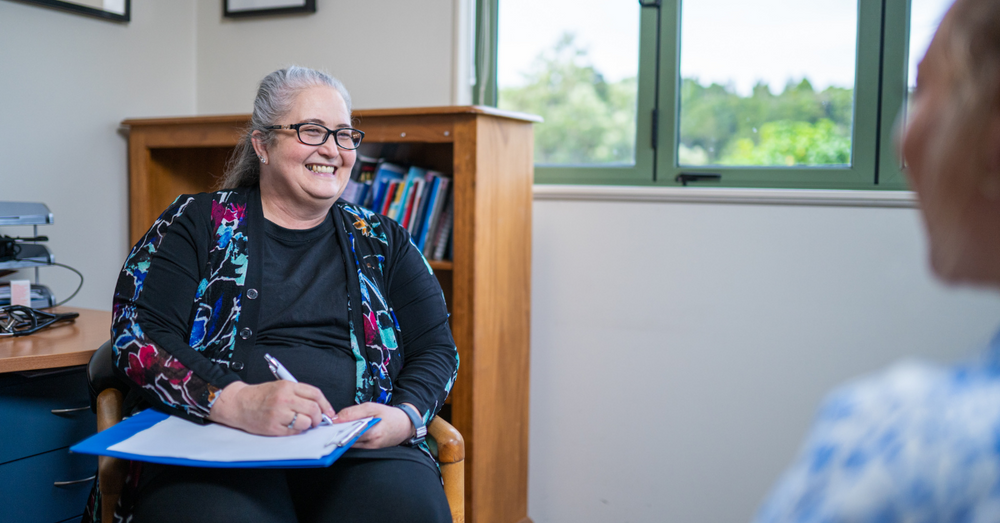A day in the life of a psychiatrist

Dr Darryl-Lee works in Child and Adolescent Mental Health in the Auckland (New Zealand) region, she is a Psychiatry Registrar and Medrecruit locum.
“I enjoy the privilege of being in child psychiatry and the bright, overarching attitude this enjoyment manifests in me.”
A Psychiatrist's mission is to improve the mental health of their patients.
A psychiatrist's schedule often depends on their place of work. The two most common work environments for psychiatrists are hospitals and private offices. This article covers what a typical day might be like for psychiatrists in each setting.
“The myriad of challenges provoke learning and continued development that keep one young at heart and mind. Knowing that through many interventions, I can make a difference, initiate effective change, and enhance mental health and resilience without stigma for children, adolescents, and their families/whanau through contribution as part of a multidisciplinary team is exhilarating and job-satisfying.”
Psychiatry health workforce data at a glance:
We have pulled some statistics from the online reports credited below to give you a look at the data around the psychiatry workforce in Australia. All sources are credited, please follow the links for more information on these reports.
- There were 3,769 psychiatrists, 24,567 mental health nurses, 31,618
psychologists and 2,555 mental health occupational therapists working in
Australia in 2020.
- The majority of these professionals reside in New South Wales at 1109 followed by Victoria 1044 and the Queensland 775.
- The paid lived experience workforce in specialised mental health care facilities
has grown at an average annual rate of 15.9% from 2015–16 to 2019–20.
- The number of psychiatrists employed in Australia increased from 1916 psychiatrists in 1995 (10.5 psychiatrists per 100 000), to 4211 psychiatrists in 2022 (16.2 psychiatrists per 100 000).
- In terms of gender differences, the average annual rate of increase in the number of female psychiatrists since 2008 was 7.4%, as compared to just 2.1% for male psychiatrists.
- Female psychiatrist numbers have increased as a proportion of the total workforce from 24% in 1995 to 43% in 2022, representing an improvement in gender equity.
Looking for a doctor job that matches your career and lifestyle aspirations?
Search jobs- Only 14% of Australian psychiatrists work rurally, but 29% of the population – around 7 million people – live in regional, rural and remote areas. Sourced RANZCP, 2024
In the hospital setting, a psychiatrist's duties often depend on where they are at with their medical training program. Typically, psychiatrists in hospitals would start the day by making rounds of the ward. This would involve checking in on all the patients they are currently in charge of and checking on their progress to determine if any adjustments in their treatment need to be made.
Junior psychiatrists can often work longer hours and be on call. This is why it is important to keep health and wellbeing in mind.
“Once I understood that if I don’t look after myself I am hopeless at helping others without burning out, I made some radical changes to put my health and wellbeing as a priority" explained Darryl-lee.
She says her personal health and wellbeing “very rarely comes before work”, but has found that it can be incorporated into her every day. “I made a routine that allows me to make time for everything I need to do, making small changes and constantly reflecting on this.”
Once psychiatrists have completed their medical training they are able to work in private practice or clinics. A private practice schedule can differ greatly from that of a hospital psychiatrist. They often have the opportunity to work Monday through Friday and take weekends off. They often have a smaller group of patients and usually spend most of their time meeting with patients individually.
A typical day in the life of a private practice psychiatrist might include seeing multiple patients, reviewing their medical records, conducting psychological evaluations, evaluating their symptoms, and taking notes on their progress. If medication is needed, psychiatrists can write prescriptions or offer treatment suggestions. Private practice psychiatrists often have a range of other tasks that may include administrative duties and payment processing.
Dr Darryl-Lee's advice for other psychiatrists was, “It’s about maintaining good habits while working hard—nutrition and a balanced diet with plenty of fresh fruit and vegetables, exercise and activities, and balancing getting out of the office and the house to spend time with family and friends.”
Working with a medical recruitment agency as a psychiatrist
Dr Darryl-Lee locums as a psychiatrist with Medrecruit. Working with a medical recruitment agencyoffers psychiatrists, particularly those interested in locuming, substantial benefits.
As a locum psychiatrist, you gain the flexibility to choose assignments that match your career goals and personal lifestyle. Agencies provide access to a wide range of temporary positions, from remote communities to bustling urban centers, allowing you to experience diverse working environments and patient demographics. Locuming can be an excellent way to enhance your CV, broaden your professional network, and ensure continuous professional development. With an agency’s support, you navigate seamlessly through logistical and administrative hurdles, focusing solely on your clinical practice.